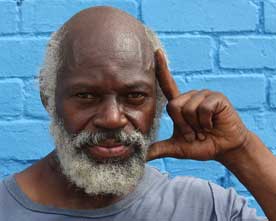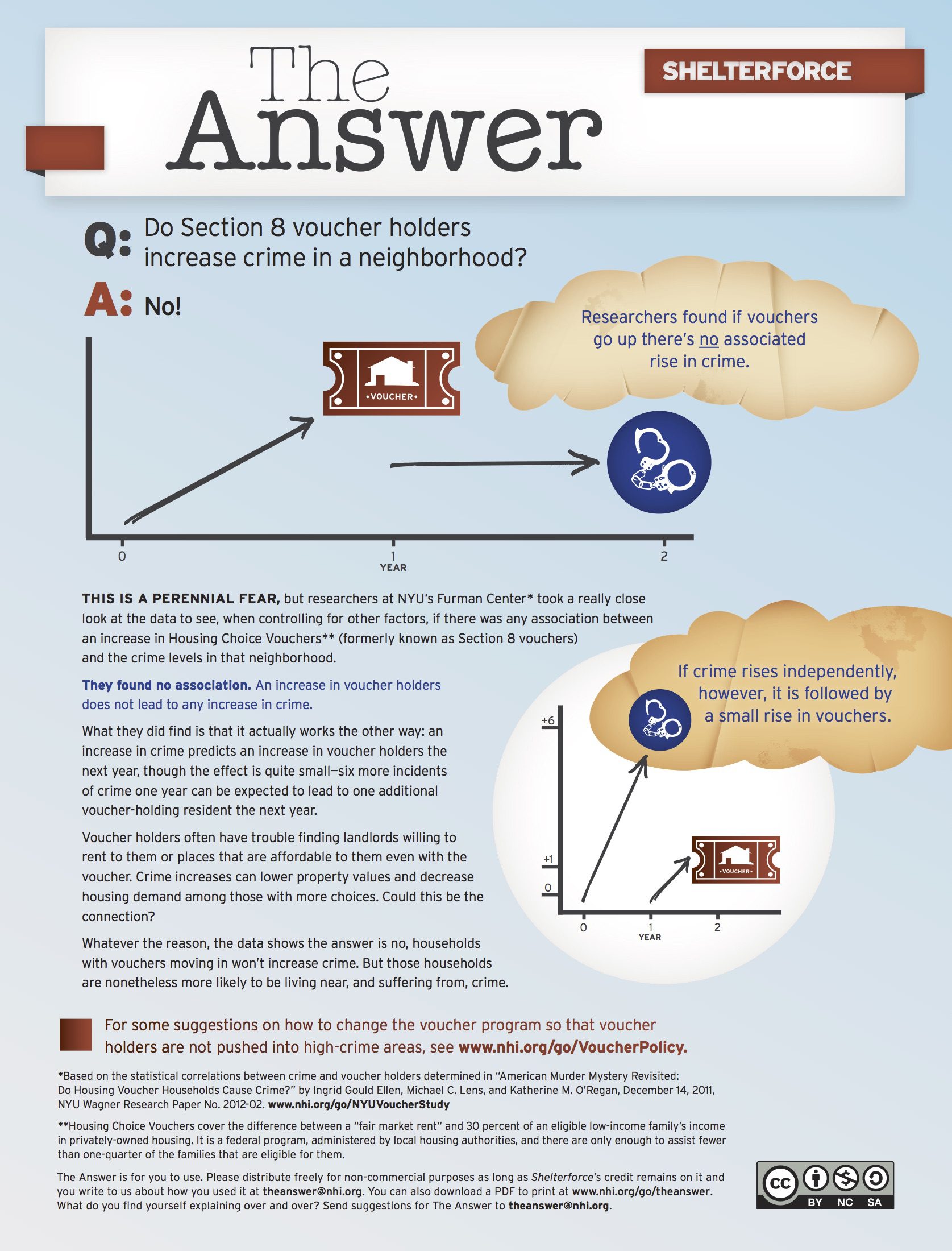
Photo by Harry Simpson. “This gentleman was walking past and I talked with him. He said he was a Vietnam War veteran and I think he was homeless. He panhandled me. I gave him $7 and shook his hand. As he was walking away, I asked him if I could take his picture. He said yes and went over to this wall and made this pose.”
Since the numbers for the 2013 Point-in-Time (PIT) survey conducted for the U.S. Dept. of Housing and Urban Development (HUD) were released, there has been much discussion of the reduction in the number of homeless veterans. In 2014 there was a further decrease, totaling a 33 percent reduction since 2010. There is no debating that the progress seen in this subpopulation is cause for celebration. However, as the federal goal of ending veteran homelessness by 2015 nears, there are some who question whether communities should be focusing on a single subpopulation at all, and if so, whether veterans are the correct subpopulation. While well intentioned, these debates are time-consuming and distract communities from focusing on what is a monumental opportunity to prove that homelessness is a solvable problem.
For decades, advocates have noted that limited resources allowed no real opportunity for a substantive decline in homelessness. As a result, our nation’s response to homelessness was to manage the issue with shelters and transitional housing. However, even after the introduction of the Housing First model and supportive housing strategies, the homeless population did not decline. An overall lack of affordable housing, an insufficient number of housing vouchers, declining investment in public housing, and no consistent resources for prevention or rapid re-housing have caused our homeless population to increase.
Not Focusing on Veterans Would Be Strategic Error
To make progress, the United States Interagency Council on Homelessness’s (USICH) Opening Doors plan identified priority subpopulations. In some communities, there is debate over where families or veterans should be prioritized. Some advocates have argued that focusing on families allows the impact on children to be mitigated as quickly as possible, as reducing the length of time a child lives without a home is proven to increase health and educational outcomes. While no one disputes the impact of housing on a child’s life, failing to focus on the homeless veteran subpopulation would be a strategic error with long-term implications.
In reviewing the 2013 PIT data, we see there are fewer homeless veterans than homeless people in families. In 2013, there were 222,197 people in families experiencing homelessness; 30,626 of these people were living in unsheltered places. This is compared to 57,849 homeless veterans, of whom 23,154 were unsheltered.
There are historic levels of resources dedicated to this subpopulation. There is broad bipartisan congressional support for programs that span the spectrum of housing need, and as the capacity of these programs has increased, the number of homeless veterans has steadily fallen. These resources, combined with health and service benefits, provide communities with the necessary resources to end veteran homelessness.
The creation of the HUD-Veterans Affairs Supportive Housing program (HUD-VASH) and the continual growth of the number of vouchers it has to offer have provided housing subsidy for this demographic on a scale that has made an impact. The scale of HUD-VASH allotments has been paired with ongoing efforts to improve the targeting of this resource to those most in need.
In addition to HUD-VASH, the Dept. of Veterans Affairs’ (VA) Supportive Services for Veteran Families program (SSVF) has built on the success of the Homelessness Prevention and Rapid Re-Housing Program (HPRP). Prevention and rapid re-housing resources, or “soft subsidies,” have been a long sought-after asset by advocates. The successful use of HPRP has been credited with preventing a dramatic growth in homelessness during the recent recession. With SSVF, providers have ongoing resources that can build on the lessons of HPRP and continue to illustrate the essential role that prevention and rapid re-housing programs play in ending homelessness. (For more on this, see here.)
Across the housing spectrum, veteran access to transitional housing through the Grant and Per Diem (GPD) program is another resource that can meet the needs of this subpopulation. The VA’s work to allow GPD resources to be expanded and used for more permanent housing solutions with Transition in Place shows a willingness to use all resources in a flexible manner to meet the housing needs of veterans.
Coordination with Other Homelessness Resources
Another game-changer was passage of the Affordable Care Act. For non-VA qualified veterans in states that have expanded Medicaid, the ACA presents a new opportunity for healthcare coverage. In addition, with the ACA’s emphasis on prevention, there is a growing understanding that Medicaid resources can be used to help the development and operation of supportive housing. These resources complement traditional housing and anti-poverty federal programs such as the Low Income Home Energy Assistance Program (LIHEAP), Supplemental Nutrition Assistance Program (SNAP), and Women, Infants, and Children (WIC) to present a level of federal support for veterans at which a central challenge is no longer insufficient resources, but rather coordination of those resources.
With coordination of resources in mind, USICH, HUD, and the VA have supported community boot camps in cities across the country. As part of the 100,000 Homes Campaign, these boot camps have enacted system changes that have decreased the amount of time it takes to house the homeless. The campaign announced in June that as a result of this work, they had housed 101,628 people, including 31,171 veterans.
To extend this progress, the VA launched the 25 Cities Initiative. The initiative is designed to accelerate the progress of ending veteran homelessness in 25 of the nation’s largest cities, which have more than 22,000 of the nation’s homeless veterans. When these cities succeed, the nation will have decreased veteran homelessness by 47 percent in three years.
With less than 12 months until the end of 2015, local leadership will be critical. To engage local leaders and raise awareness of the unique opportunity the nation has, First Lady Michelle Obama announced the launch of the Mayors Challenge to End Veteran Homelessness. As part of the Joining Forces effort, the challenge already has support from five governors and more than 100 mayors and local elected officials.
The decline in veteran homelessness gives evidence to what providers and advocates have long claimed: homelessness as we know it can end. As more communities focus on ending veteran homelessness, the improvements in client prioritization, service coordination, and housing placement can be extended to other segments of the homeless population. Thus, as communities succeed in ending veteran homelessness, local leaders will have the evidence to show Congress and others that ending homelessness for other subpopulations is also possible.
Our nation has just ended more than a decade of war in which little was asked of the vast majority of Americans. As veterans return home from service, we acknowledge that they are owed nothing less than the nation’s best opportunities. If communities lose this chance to show that public will and federal resources are enough to end homelessness for our veterans, we may never have the chance to show we can do it for anyone.




Comments